One of the hardest tasks people are often faced with when they move into a new home is securing a consistently reliable internet connection. This is especially the case if you have more than a few bedrooms and additional square footage. Since Wi-Fi transmission caps out at a certain point, it can become weak as the distance from your router increases. To fix this, you’ll likely have to purchase additional hardware. Your Netflix might work perfectly in the living room, but if you try it in the bedroom, chances are, it’s not going to be quite as fast.
Conversely, if you place the router in your bedroom and then decide to read up on some recipes in the kitchen, you might have in that situation as well. So how do you secure full coverage in your home, regardless of your routers location? Luma, the “Surround WiFi Router” may be your best solution.
What Can It Do For Your Home?
The first use for the Luma Home WiFi System is network security. It’s constantly running in the background to make sure that all connected devices are password protected. It does this as a security measure so that non-domestic devices don’t have the ability to connect. Additionally, it’ll scan for malware in the process.
Luma is an all-in-one management tool for your home network, giving you full control over the different users/devices. It even allows you to cap the amount of time a certain device can spend on the Internet. This makes it great for parents, given they can now monitor what their children are viewing.
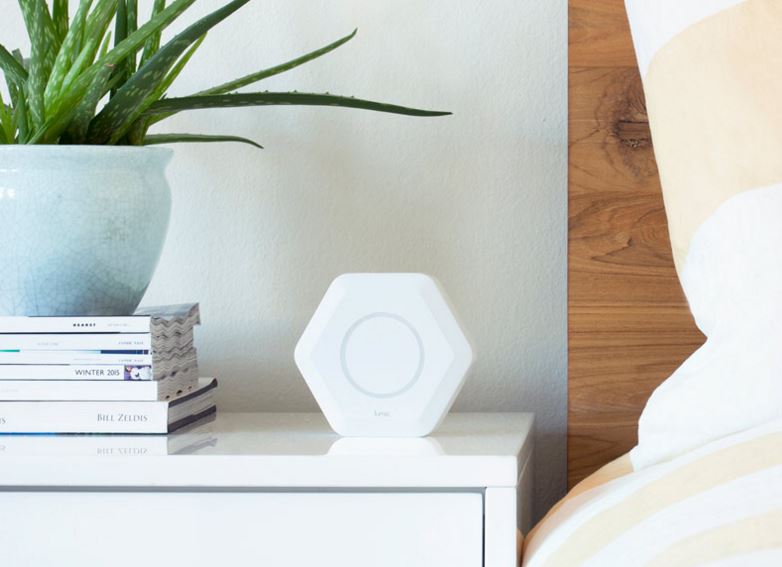
If you’ve used regular or standard routers that ISP’s tend to sell at inflated prices, you’ve probably noticed that many of them can be quite demanding in terms of IT knowledge. For some, it may even seem that you need professional IT experience just to adjust basic settings without messing everything up.
The advantage Luma has over these is a simple management system via mobile app. The company calls this your “companion” app, and you as the admin are granted full control over everything network-related. For instance, you can allow/ban devices from connecting, read information on servers that your “smart” appliances are connected to. It can even give you a generic view of pages loaded (you can see someone is checking their email but can’t read the actual email).
The administrator “activity tracker” mostly serves for parental control. In practical terms, this means you’ll be able to lock certain connected devices in a way that they can’t view adult-rated content. These “locks” don’t stretch across the board for all connected devices, only the ones you selected. If you prefer to approve everything on a case-by-case basis, you can be prompted about each connection attempt. In addition, the monitoring will allow you to see whether your kids are studying, or just spending time on the web.
Business-Level Security At Home
The reason why Luma is so revolutionary in terms of home security (similar to the Eero) is that it takes the level of security that was normally reserved for business environments, and makes it accessible to the regular user and their household. Whenever devices attempted to do this in the past, they failed at providing that full spectrum of practical features and in turn, people had to settle for less. Now this truly isn’t the case. Your Luma WiFi System is automatically on the lookout for network intrusions, checking whether your connected devices are/have contracted malware.
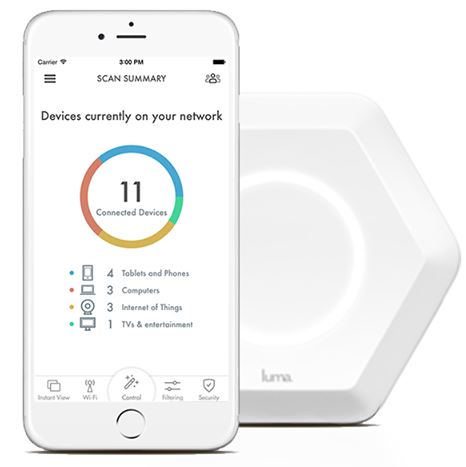
The “security” doesn’t imply phones and tablets only. Many devices like smart TV’s and even some smart kitchen appliances may send out information to the manufacturer without your known consent. Luma also checks for random password changes in case someone attempts to breach your network. If people try to connect, you’ll be immediately prompted and given the option to either approve or not. As soon as they’re connected, you retain full control over their connection, but you can cut them out as you please.
Several of the latest routers feature 802.11ac connectivity, including Luma – it’s really become the standard. Luma is packed full of new, updated, long-lasting hardware and you’ll likely notice it doesn’t look like the average router. The company wanted to make it as design-neutral as possible, thus fitting for even the most modern interiors.
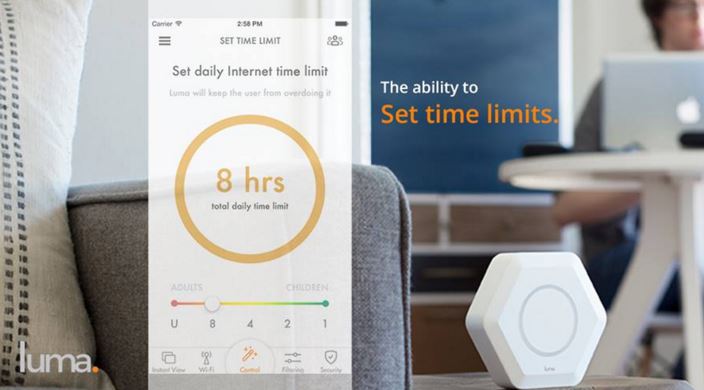
Exceptional Parental Controls
As mentioned, Luma offers some high-end parental control features since it was mostly designed for typical family environments. There are a lot of disturbing websites on the Internet you don’t want your kids stumbling upon, as this can have a serious effect on their psychology – not simply just adult websites. The good news is that you can configure it to restrict ones you’re not familiar with, and analyze the rest on a case-by-case basis before approving.
Tracking can be a problem with Luma, which is why it might be considered a downside for people who don’t want to breach other’s privacy. Individual connectivity data is retained for a year and you can’t lock this feature out. You can only hide certain activities. The way it presents it is by giving you the list of websites visited – however, without actual screenshots.

Trusted Creators
The technology Luma makes accessible is impressive, but this is expected when you take in consideration the qualified team behind it. Two senior founders, Paul Judge and Mike Van Brunisse, who have a lifetime of experience/specialization in messaging and cloud based security, came up with the internal mechanics, then effectively managed to fund the company on their own. They analyzed security systems that were available for big companies and decided to trickle that down into a high functioning home security system.
Any Downsides?
In the case of Luma, the main downside is also its strongest advantage point depending on how you look at it. It’s unmatched technology in terms of home usage, but it’s ability to save personal data may throw some people off. However, there are certainly similar alternatives out there, like the new Eero. For one, Eero offers similar security features, but doesn’t log or give you access to what people are individually viewing.
The Verdict
We can safely conclude that although the Luma Home WiFi System has taken a long time for the company to produce and finally release, they put a lot of extra effort into making the system run flawlessly and with the best technology. We think that it’s currently one of the best user-friendly products for home network and Internet security – especially for those who aren’t too savvy with a typical router.
Meet Ry, “TechGuru,” a 36-year-old technology enthusiast with a deep passion for tech innovations. With extensive experience, he specializes in gaming hardware and software, and has expertise in gadgets, custom PCs, and audio.
Besides writing about tech and reviewing new products, he enjoys traveling, hiking, and photography. Committed to keeping up with the latest industry trends, he aims to guide readers in making informed tech decisions.

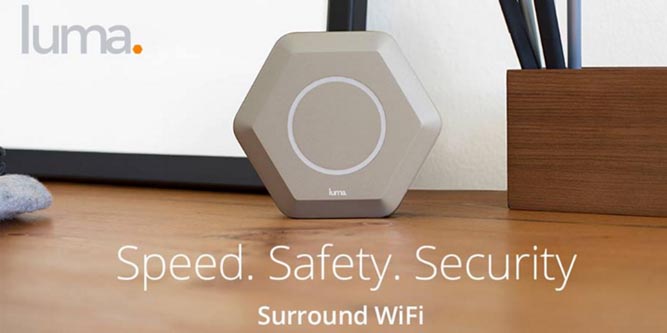
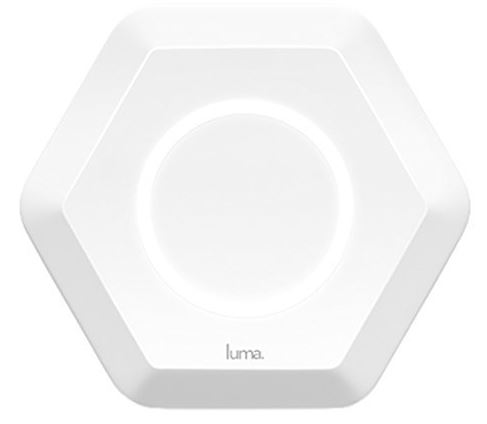
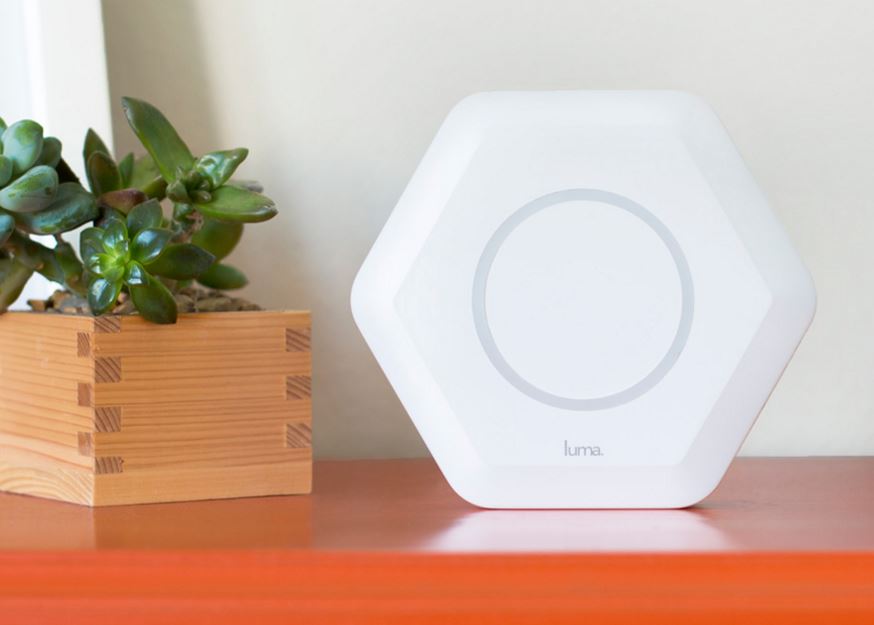

We were told we’d have our Luma units shipped Spring of 2016. I ordered mine in January 2016, and I’ve not received notice of shipment. I was told via an email they can’t estimate ship dates. However, they still think they met their promise because they started shipping some units the day before Summer. They might have a great product, but horrible customer service and corporate culture.
They are late in shipping. They promised too much for the market. I got Starry and it is unreal. Best choice I made cancelling my order of the Luma product that seems to be all hype.
I installed Luma three-node last week in my two-floor split-level house. It does have a slight speed increase over my old NetGear router, but a huge connectivity improvement. For some reason, under the NetGear my connections would drop (or timeout) if I wasn’t actively using them. That problem appears to have been resolved with Luma. I paid $170 for three nodes, which I consider a bargain for a mesh network.